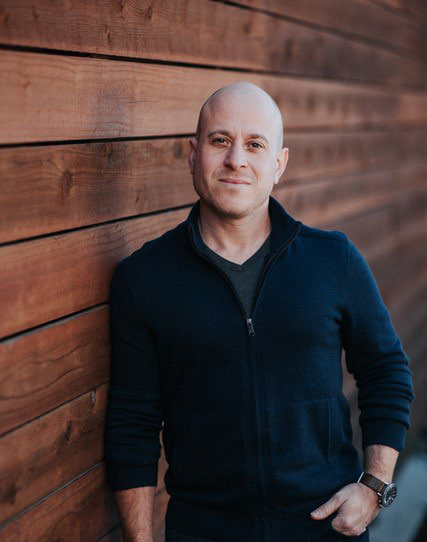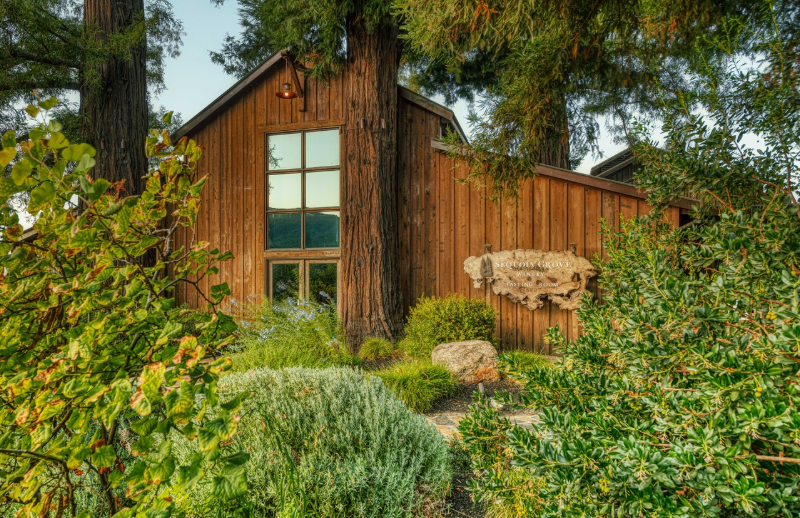A few weeks ago, I was invited to share a meal and taste wines with Napa Valley winery Sequoia Grove’s winemaker Jesse Fox at eminent restaurant Tosca in Washington DC. Prior to his start as a winemaker, Jesse worked in the culinary world. He graduated from the esteemed Cornell Hospitality program, followed by training at the Cordon Bleu in France and ending his culinary career at the French Laundry in Napa Valley. He has made wine around the world in both the northern and southern (New Zealand) hemispheres as well as in the old world (France) and new world, spending most of his time working in Napa Valley. Sequoia Grove and Jesse kindly hosted me for dinner and enabled me to taste wines available widely in the national market along with others that are only available to club members and visitors to their tasting room in Rutherford. As you would imagine, it was an interesting and delicious evening—one worth recounting.

We tasted two of the winery’s current release whites, Napa Valley Sauvignon Blanc 2023 and Napa Valley Chardonnay 2023. Sequoia Grove has been producing a Sauvignon Blanc for 15 years and offering it in the tasting room only. In good news for consumers and fans of the winery, I was told that the winery is getting ready to expand availability with a plan to launch wider distribution in 2026. The winery has been acquiring vineyards including one that they previously bought fruit from to produce this wine. It is located just south of Rutherford. The other vineyard is planted near the Napa River in Yountville with shallow 12 inch topsoil atop river rock.
Gentleness is the theme in production of this wine, starting with hand harvesting prior to slow, whole-cluster pressing and native yeast fermentation. Malolactic fermentation is blocked to enhance the wine’s freshness, but it is then aged for six months on its yeast lees to enhance fheshiness and complexity. It was fermented in a mix of stainless steel tanks, neutral barrels and 10% new French oak casks. It presents an excellent interplay of crunchy green and ripe peach fruit notes set off against filigree acidity. The palate weight enhanced by the 10% new oak aged component showed very nicely in the company of an appetizer of salmon crudo, elevating the rich texture of the fish.
The current release of the winery’s more widely available Chardonnay also comes from the 2023 vintage, which Jesse described as the coolest of the last 30 years. The cool weather conditions maintained higher natural acidity in the grapes and allowed a later harvest than usual, lending a riper fruit tone without excess weight or alcohol. Barrel fermentation was performed in one-third new French oak with full malolactic conversion, followed by 11 months aging in barrel. This process resulted in a Chardonnay with classic American richness and subtle fruit notes recalling white peaches and apricots.
If one were predicting the wines profile based solely on a rundown of the production process, one might guess that this is a full-throttle butter-bomb of a wine, but while it shows the lactic qualities of its production it also maintains a good core of acidity and what seems like moderate alcohol. While the Chardonnay was richer than the Sauvignon Blanc, both were overpowered by the briny richness of a scallop dish, its green spinach/lemon sauce both buttery rich and herbal in a way that didn’t quite make either wine taste better. So it goes—not the wine’s fault.
Most of those around the table ordered (understandably) one of Tosca’s fresh, house-made pasta dishes. I opted for Spanish Octopus cooked on a plancha and flavored with black garlic and smoked paprika, as I knew we were in for at least two Napa Cabernets (which are not wines I typically pair with tomato based sauces). The smoked paprika, black garlic and Gigante beans in my dish all called out for red wine (to my mind, at least, having paired those flavors with Tempranillo- or Mencía-based wines numerous times in the past). In the end, we tasted three Sequoia Grove Cabernets, starting with two that are currently limited to sales at the winery—Rutherford Bench Reserve 2021 and Tonella Vineyard Cabernet 2021—and one with wider distribution, Napa Valley Cabernet 2021.
Rutherford Cabernets are often spoken of in connection with “Rutherford Dust,” a term that originally referred to characteristics of the ancient soils in this Napa Valley sub-region but is sometimes also used to refer to the deep, dusty, cocoa-powder-like tannins in Cabernets from the area. Sequoia Grove’s website makes reference to this second usage, and based on that, tasting the 2021 Rutherford Bench Reserve led me to give it an “A+” for regional typicity. It showed a resounding richness composed of deep roasted notes including torrefied coffee and cocoa powder offset by plush dark plum and blackberry fruit which fills every corner of the mouth. No doubt, some of this complexity comes from the inclusion of 19% of the other typical “Bordeaux” [Napa] grapes: Cabernet Franc, Merlot, Malbec and Petit Verdot.
Tonella Vineyard may not yet be a household name, even for fans of Napa Cabernet. Increasing the availability of this wine with a pending June release of this wine to national distribution markets should change consumers’ familiarity and raise esteem for the site. This historic, fifty-acre vineyard was owned by the Rutherford brothers (for whom Rutherford is named) for seventy years. The Tonella family subsequently bought the vineyard and cultivated the vines for fifty years, selling the resulting fruit to Grandfather JJ Ponte’s employer, Beaulieu Vineyard. BV used Cabernet from this site as a key part of the iconic George de La Tour Reserve Cabernet for many years.
By contrast with the other estate vineyards of Sequoia Grove, which are situated on the west side of the valley with alluvial soils, Tonella is on the east side of the valley, with volcanic soils and a cooler microclimate resulting in higher acidity, lower Ph, and distinct notes of minerals, crushed rock and black and blue fruit. The wine itself shows immense concentration, but never harshness of texture, with a concentrated fruit character buffering the large frame of the wine and in-mouth floral aromas of violets lending a fresh sensation to the wine. This wine paired particularly well with a dish of grilled beef, juxtaposing the richness of the beef fat against the tannin-buffered richness of the Cabernet on the palate.
We tasted the “core” expression of Napa Cabernet last (meaning, the Sequoia Grove Cab 2021 with a straight-up Napa Valley AVA designation). That’s a challenging order for the wine to be tasted in—following more expensive releases—but that fact proved that it is very well made and can stand up against “bigger ticket” Cabernets. Jesse seemed especially proud of it, citing its 80-85% Cabernet component sourced from about 65% Rutherford vineyards and including Stagecoach vineyard, plus fruit from the Atlas Peak and St. Helena AVAs. While lighter and sweeter in expression, with more milk chocolate notes by comparison to the more savory tones of the more expensive wines, there was still an evident family resemblance between all three Cabernets in terms of freshness, balance, and power.
Finally speaking of gentleness, Sequoia Grove was one of the first five wineries to be certified “Napa Green” due to emphasizing water and energy efficiency, recycling, reducing greenhouse gas emissions and the winery’s carbon footprint, and a focus on social equity. They also minimize irrigation to a maximum of twice per year. All of this bespeaks commendable sensitivity to the environment, which is especially impressive on the part of a historic Napa estate that is so clearly committed to wine quality.

